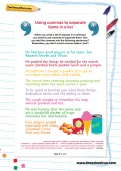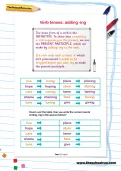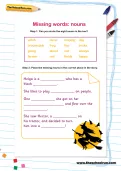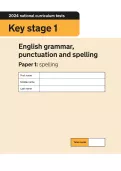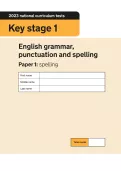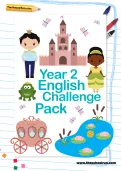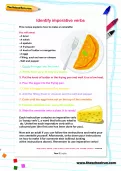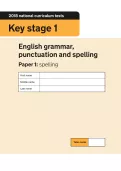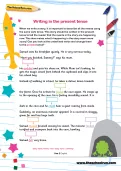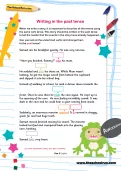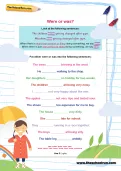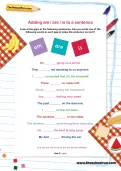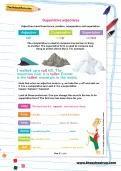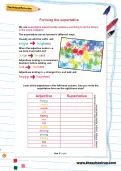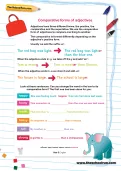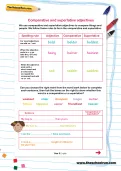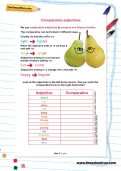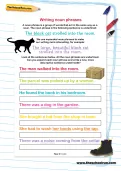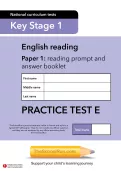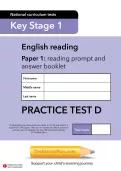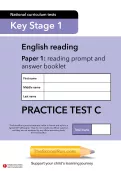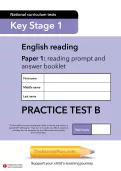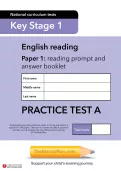Help your child prepare for the optional English KS1 SATs, taken at the end of Year 2, with some at-home practice. These complete Y2 SATs past papers from 2024 are the official Department for Education papers used in schools.
or
Register to add to your saved resources
Help your child prepare for the English KS1 SATs, taken at the end of Year 2, with some at-home practice. These complete Y2 SATs past papers from 2023 are the official Department for Education papers used in schools.
or
Register to add to your saved resources
Challenging reading comprehensions and activities for Year 2 readers and writers, designed to stretch your child and offer them the opportunity to explore their year-group topics in greater depth.
or
Register to add to your saved resources
Already a subscriber? to view this content.
Identify and underline all the imperative verbs in this instruction text about making an omelette – then make and eat one yourself!
or
Register to add to your saved resources
Help your child prepare for the English KS1 SATs, taken at the end of Year 2, with some at-home practice. These complete 2018 Y2 SATs past papers are the official papers from the Department for Education, used in schools.
or
Register to add to your saved resources
This story should be written in the present tense to tell the reader that the events in the story are happening now. Can you look at the underlined verbs and change them to the present tense?
or
Register to add to your saved resources
Already a subscriber? to view this content.
When we write a story, it is important to describe all the events using the same verb tense. This story should be written in the past tense to tell the reader that the events in the story have already happened. Can you look at the underlined verbs and change them to the past tense?
or
Register to add to your saved resources
When there is more than person or thing doing something, we say were. When there is just one person or thing doing something, we say was. Can you put either were or was into the following sentences?
or
Register to add to your saved resources
Look at the gaps in the following sentences. Can you write one of the following words in each gap to make the sentence correct?
or
Register to add to your saved resources
Already a subscriber? to view this content.
Adjectives have three forms: positive, comparative and superlative. The comparative is used to compare one person or thing to another. The superlative form is used to compare one thing to all the others like it. Look at these sentences. Can you change the word in the box to its superlative form?
or
Register to add to your saved resources
Already a subscriber? to view this content.
We use superlative adjectives to compare one thing to all the others in the same category. Look at the adjectives in the left-hand column. Can you write the superlative form on the right-hand side?
or
Register to add to your saved resources
Already a subscriber? to view this content.
Adjectives have three different forms: the positive, the comparative and the superlative. We use the comparative form of adjectives to to compare one thing to another. The comparative is formed differently depending on the adjective’s positive form. Look at these sentences. Can you change the word in the box to its comparative form?
or
Register to add to your saved resources
Already a subscriber? to view this content.
We use comparative and superlative adjectives to compare things and people. Can you choose the right word from the word bank to complete each sentence, then tick the boxes on the right to show whether this word is a comparative or a superlative?
or
Register to add to your saved resources
Already a subscriber? to view this content.
We use comparative adjectives to compare one thing to another. Look at the adjectives in the left-hand column. Can you write the comparative form on the right-hand side?
or
Register to add to your saved resources
Already a subscriber? to view this content.
A noun phrase is a group of words that act in the same way as a noun. Look at these sentences. All the noun phrases are underlined. Can you expand each noun phrase and write a new, more
descriptive sentence underneath?
or
Register to add to your saved resources
Already a subscriber? to view this content.
Look through our new-style KS1 SATs practice papers to familiarise your child with the new Y2 assessments format. Written by primary-school teachers exclusively for TheSchoolRun subscribers.
or
Register to add to your saved resources
Already a subscriber? to view this content.
KS1 SATs practice papers for English, written in the style of the new-curriculum tests and available exclusively to TheSchoolRun subscribers.
or
Register to add to your saved resources
Already a subscriber? to view this content.
The Year 2 assessments will follow a new-curriculum format. TheSchoolRun's practice papers, available exclusively to subscribers, are presented in the new format to offer at-home practice opportunities for children at the end of KS1.
or
Register to add to your saved resources
Already a subscriber? to view this content.
New-style practice SATs papers, available exclusively to TheSchoolRun subscribers to help children practise reading comprehension, spelling and grammar in the run-up to the May Y2 assessments.
or
Register to add to your saved resources
Already a subscriber? to view this content.
Help your child get used to the new KS1 SATs format with our English practice papers, exclusive to TheSchoolRun subscribers. Each practice paper includes reading comprehension papers, a spelling test and a grammar test, as well as answers.
or
Register to add to your saved resources
Already a subscriber? to view this content.
